2020-10-08 - Nº 284
Editorial
Esta é a Newsletter Nº 284 que se apresenta com o mesmo formato que as anteriores. Se gostar da Newsletter partilhe-a!
Todas as Newsletters encontram-se indexadas no link.
Esta Newsletter tem os seguintes tópicos:
Faz hoje anos que nascia, em 1850, o químico francês Henry Louis Le Chatelier. Ele ficou conhecido pelo princípio de Le Chatelier, que permite prever o efeito que uma mudança nas condições (temperatura, pressão e concentração dos componentes da reacção) terá sobre uma reacção química. Este princípio provou ser inestimável na indústria química para o desenvolvimento de processos químicos mais eficientes. Fritz Haber utilizou-o com sucesso em seu processo de produção de amónia. Os interesses de Le Chatelier começaram em metalurgia, cimentos, cerâmica e vidro, nos seus estudos de chamas que o levaram a estudar o calor e sua medição. De várias contribuições à termometria, a sua mais importante foi o primeiro projecto bem-sucedido de um termopar de platina e ródio para medir altas temperaturas (1887).
Faz também hoje anos que nascia, em 1869, o inventor norte-americano Frank Duryea. Ele em conjunto com o seu irmão Charles Duryea construiram o primeiro automóvel com várias cópias fabricado nos Estados Unidos. Em 28 de Novembro de 1895, Frank dirigiu seu carro para ganhar o primeiro prémio na primeira corrida de automóveis americana em Chicago, realizada pelo Chicago Times-Herald. Às 8h55, seis "motas" deixaram o Jackson Park em Chicago para uma corrida de 54 milhas até Evanston, Illinois, e de volta pela neve. O nº 5 de Duryeas levou pouco mais de 10 horas (média de 7,3 mph). No início de 1896, os Duryeas fabricaram 13 cópias do carro. Frank desenvolveu a “Stevens-Duryea”, uma limusina cara, que permaneceu em produção na década de 1920. Os irmãos são reconhecidos como “Pais da Indústria Automobilística Americana”.
Por fim, faz hoje anos que nascia, em 1913, o cientista aeroespacial norte-americano Robert Rowe Gilruth. Ele foi um dos pioneiros dos programas espaciais Mercury, Gemini e Apollo. Ele desenvolveu o X-1, o primeiro avião a quebrar a barreira do som. Gilruth dirigiu o Projecto Mercury, o programa inicial para realizar voos espaciais tripulados. Sob a sua liderança, o primeiro astronauta americano orbitou a Terra apenas um pouco mais de 3 anos após a criação da NASA. Em 1961, o presidente Kennedy e o Congresso comprometeram a nação com uma aterragem lunar tripulada dentro de uma década. Gilruth foi nomeado o Director do Centro de Naves Espaciais Tripuladas e recebeu a responsabilidade de projectar e desenvolver a nave espacial e equipamentos associados, planear e controlar missões e treinar tripulações de voo.
Nesta semana que passou a AMD apresentou os processadores AMD Ryzen série 5000 para desktop desenvolvidos com base na nova arquitectura de núcleo “Zen 3” que oferecem desempenho de liderança abrangente para jogadores e criadores de conteúdo. Oferecendo até 16 núcleos, 32 threads e 72 MB de cache no processador AMD Ryzen 9 5950X, os processadores da série AMD Ryzen 5000 dominam em cargas de trabalho pesadamente segmentadas e eficiência energética, enquanto o processador AMD Ryzen 9 5900X oferece para um aumento de geração de 26% no desempenho de jogos. Com amplas melhorias em todo o núcleo, incluindo um complexo unificado de 8 núcleos com acesso directo ao cache L3 de 32 MB, a nova arquitectura de núcleo “Zen 3” da AMD oferece um aumento de geração de 19% em instruções por ciclo (IPC), o maior desde a introdução de processadores “Zen” em 2017.
Também nesta semana que passou, e ao fim de cinco tentativas, a SpaceX colocou em órbita mais 60 satélites da Starlink. O lançamento marca a 17ª missão da SpaceX até agora em 2020, e seu 94º vôo do Falcon 9 até o momento. A frota de propulsores de voo comprovados da empresa tem estado ocupada este ano, com o construtor de foguetes com sede na Califórnia alcançando alguns novos marcos, incluindo o lançamento e pouso do mesmo propulsor de primeiro estágio seis vezes.
Na Newsletter desta semana apresentamos diversas noticias, artigos científicos assim como projetos de maker.
 João Alves ([email protected])
João Alves ([email protected])
O conteúdo da Newsletter encontra-se sob a licença  Creative Commons Attribution-NonCommercial-ShareAlike 4.0 International License.
Creative Commons Attribution-NonCommercial-ShareAlike 4.0 International License.
Novidades da Semana
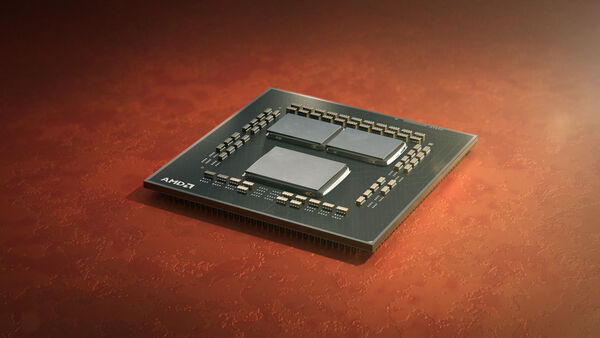
AMD Launches AMD Ryzen 5000 Series Desktop Processors: The Fastest Gaming CPUs in the World
"AMD Ryzen™ 5000 Series Desktop Processors built on new “Zen 3” core architecture deliver across-the board leadership performance for gamers and content creators Today, AMD (NASDAQ: AMD) introduced the highly anticipated AMD Ryzen 5000 Series desktop processor lineup powered by the new “Zen 3” architecture. Offering up to 16 cores, 32 threads and 72 MB of cache in the top-of-the-line AMD Ryzen 9 5950X, AMD Ryzen 5000 series processors dominate in heavily threaded workloads and power efficiency, while the AMD Ryzen 9 5900X processor offers up to a 26% generational uplift in gaming performance. With extensive improvements throughout the core including a unified 8-core complex with direct access to 32MB L3 cache, the new AMD “Zen 3” core architecture delivers a 19% generational increase in instructions per cycle (IPC), the largest since the introduction of “Zen” processors in 2017. “Our commitment with each generation of our Ryzen processors has been to build the best PC processors in the world. The new AMD Ryzen 5000 Series Desktop Processors extend our leadership from IPC4, power efficiency2 to single-core5, multi-core performance1 and gaming6,” said Saeid Moshkelani, senior vice president and general manager, client business unit, AMD. “Today, we are extremely proud to deliver what our community and customers have come to expect from Ryzen processors – dominant multi-core1 and single-core performance5 and true gaming leadership6 - all within a broad ecosystem of motherboards and chipsets that are drop-in ready for AMD Ryzen 5000 Series Desktop Processors.” AMD Ryzen 5000 Series Desktop Processors Featuring a remarkable 19% IPC increase4 over the prior generation in PC workloads, the “Zen 3” architecture pushes gaming and content creation performance leadership6 to a new level." [...]

SpaceX launches 60 Starlink satellites and lands rocket at sea
"The two-stage Falcon 9 rocket blasted off from Pad 39A at NASA's Kennedy Space Center at 7:29 a.m. EDT (1129 GMT), hauling a full stack of 60 Starlink satellites. Approximately 9 minutes later, the booster's first stage came back to Earth, landing on one of SpaceX's drone ships in the Atlantic Ocean. The launch marks SpaceX's 17th mission so far in 2020, and its 94th Falcon 9 flight to date. The company's fleet of flight-proven boosters has been busy this year, with the California-based rocket builder reaching a few new milestones, including launching and landing the same first-stage booster six times. The launch also came amid World Space Week 2020, which is celebrating the impact satellites have on everyday life. Poor weather conditions at Falcon 9's ocean recovery site forced SpaceX to stand down from its first attempt to launch this particular Starlink mission on Sept. 17." [...]
Outras Notícias

Microchip Revs Up Motor Control Support with New Devices and an Expanded Design Ecosystem
"Company further simplifies system development with products, tools, a torque-maximizing algorithm and additions to industry’s broadest offering of motor control reference designs As electric motors proliferate across a growing range of system applications, developers need products and tools that ensure systems run as efficiently as possible while reducing board size, component count and energy consumption. Microchip Technology Inc. (Nasdaq: MCHP) today announced it has expanded its motor control offering with digital signal controllers (DSCs) and microcontrollers (MCUs) that are supported by design tools, development hardware, a torque-maximizing algorithm and a refrigerator compressor reference design. “New products like Microchip’s dsPIC33C DSC devices with their high analog integration demonstrate our continued investment in simplifying motor control system design while reducing development and bill of materials costs in automotive, industrial, medical and consumer applications,” said Joe Thomsen, vice president of Microchip’s MCU16 business unit. “Our newly enhanced support ecosystem helps engineers get their designs done faster with the optimum combination of performance, efficiency and reliability.” Microchip’s motor control family additions include: dsPIC® DSCs: The cost-optimized, functional safety-ready dsPIC33CK64MC10x DSCs for Field Oriented Control (FOC) are supported by motor control Plug-in Modules (PIMs) for existing motor control development boards and also with a new cost-effective low-voltage motor control development board. MPLAB® X Integrated Development Environment (IDE) and MPLAB Code Configurator (MCC) support rapid code development while motorBench® Development Suite provides FOC motor control optimized code generation. PIC32MK MCJ and MCM MCUs for FOC: The second-generation 32-bit MCU devices offer 32-bit floating point and DSP performance with flexible communications options." [...]
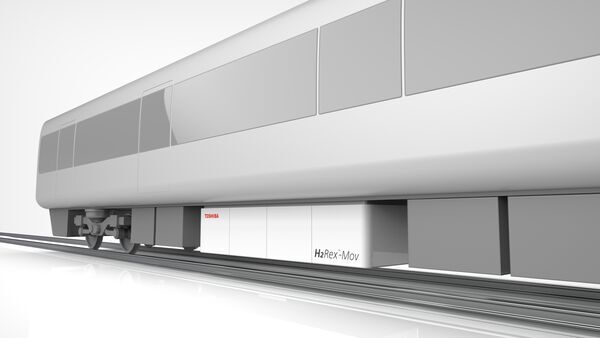
Toshiba to accelerate development of pure hydrogen fuel cell module for vessels and railroad vehicles
"Toshiba Energy Systems & Solutions Corporation (Toshiba ESS) announced today that it has signed an agreement with New Energy and Industrial Technology Development Organization (NEDO) on commissioned business for a multi-utility pure hydrogen fuel cell module for large modes of transport as a part of technology R&D programs for widespread implementation of fuel cells. The project will develop a compact, lightweight and high-power 200kW class standard module*1 of pure hydrogen fuel cells, “H2RexTM-Mov”, for use by vessels, railroad vehicles, construction machinery and other large modes of transport, to be completed by the end of fiscal 2024. As environmental awareness grows, there are increasing needs for pure hydrogen fuel cell systems that generate electric power which does not take out a contaminant and CO2 emissions. Pure hydrogen fuel cell systems developed for large modes of transport such as vessels, railroad vehicles and construction machinery require greater durability than those for cars and buses, which are already being developed and commercialized. Toshiba ESS is employing technologies from its stationary pure hydrogen fuel cell power generation systems to develop a high-power pure hydrogen fuel cell module for large modes of transport which offers greater durability and is more compact. The module is also being designed for better response, consideration for environmental effects such as vibration, and for safety according to safety codes and standards." [...]
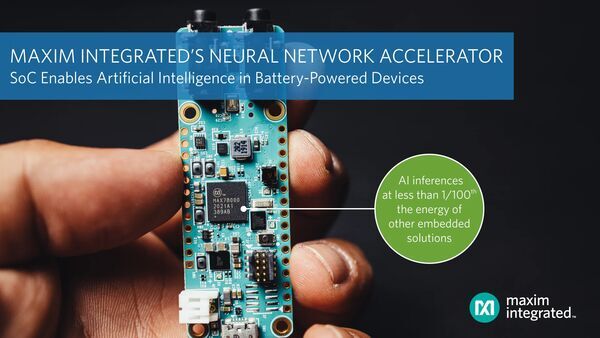
Maxim Integrated’s Neural Network Accelerator Chip Enables IoT Artificial Intelligence in Battery-Powered Devices
"MAX78000 reduces energy consumption and latency by a factor of over 100 to enable complex embedded inference decisions at the IoT edge The MAX78000 low-power neural network accelerated microcontroller from Maxim Integrated Products, Inc. (NASDAQ: MXIM) moves artificial intelligence (AI) to the edge without performance compromises in battery-powered internet of things (IoT) devices. Executing AI inferences at less than 1/100th the energy of software solutions dramatically improves run-time for battery-powered AI applications, while enabling complex new AI use cases previously considered impossible. These power improvements come with no compromise in latency or cost: the MAX78000 executes inferences 100x faster than software solutions running on low power microcontrollers, at a fraction of the cost of FPGA or GPU solutions. Maxim Integrated's Artificial Intelligence solutions › MAX78000 › Hi-res image › MAX78000 quick-start video › AI technology allows machines to see and hear, making sense of the world in ways that were previously impractical. In the past, bringing AI inferences to the edge meant gathering data from sensors, cameras and microphones, sending that data to the cloud to execute an inference, then sending an answer back to the edge. This architecture works but is very challenging for edge applications due to poor latency and energy performance." [...]

STMicroelectronics Introduces Bluetooth® 5.2-Certified SoC, Extending Range, Throughput, Reliability and Security
"STMicroelectronics has revealed its latest BlueNRG-LP Bluetooth® LE System-on-Chip (SoC), which leverages the latest Bluetooth features to increase communication range, raise throughput, strengthen security, and save power. The ultra-low-power radio is optimized to consume as little as 3.4mA in receive mode, just 4.3mA when transmitting, and less than 500nA quietly waiting for wake-up events, cutting by half the size of battery needed in most applications and prolonging runtime. BlueNRG-LP, the 3rd-generation Bluetooth SoC from ST, is the world’s first Bluetooth LE 5.2-certified SoC to support concurrent connections up to 128 nodes, enabling seamless low-latency control and monitoring large numbers of connected devices, for instance from a stylish and intuitive smartphone app. Combined with high RF-output power, which is programmable up to +8dBm, and excellent RF sensitivity up to -104dBm, the BlueNRG-LP radio SoC can now natively cover a much larger area in beacons, smart lighting, gaming, building automation, industrial and tracking applications. Furthermore, the communication range can be extended without limit by seamlessly adding Bluetooth LE Mesh, now fully certified and available as part of the comprehensive BlueNRG software and hardware ecosystem. In addition, BlueNRG-LP supports Bluetooth Long Range mode, which uses coded physical layers (Coded PHY) with Forward Error Connection (FEC) to extend radio-communication range up to hundreds of meters and increase reliability, as well as GATT (generic attribute) caching to connect quickly and efficiently." [...]
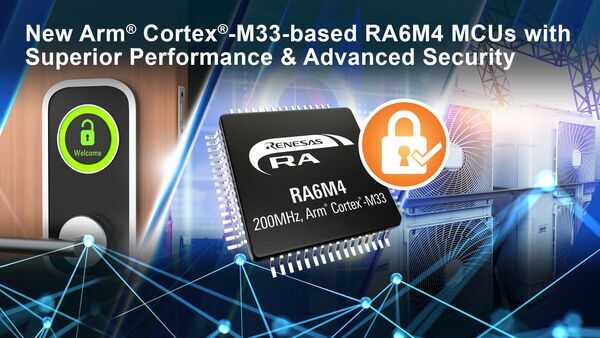
Renesas Launches Arm Cortex-M33-based RA6M4 MCU Group with Superior Performance and Advanced Security for IoT Applications
"Combines Arm TrustZone Technology with Renesas-enhanced Secure Crypto Engine, Octa Memory Interface, and Innovations that Enable Easy Security Solution Designs Renesas Electronics Corporation (TSE:6723), a premier supplier of advanced semiconductor solutions, today announced the expansion of its RA6 Series microcontrollers (MCUs) with nine new RA6M4 Group MCUs, increasing the RA Family to 42 MCUs. These 32-bit MCUs boost operating performance up to 200 MHz using the Arm® Cortex®-M33 core based on Armv8-M architecture with Arm TrustZone® technology. The RA6M4 MCUs deliver optimized performance together with leading-edge security and connectivity supported by the easy-to-use Flexible Software Package (FSP). In addition, the Renesas partner ecosystem offers software and hardware building blocks that work out-of-the-box with RA6M4 MCUs and FSP to address Industrial 4.0, building automation, metering, healthcare, and home appliance applications. With strong security, rich connectivity, large embedded RAM with parity/ECC, low power consumption, and leverage of the Arm developer and tools ecosystem, the RA6M4 MCUs speed the development of intelligent IoT edge and endpoint devices. Renesas’ enhanced Secure Crypto Engine delivers excellent security solutions, incorporating multiple symmetric and asymmetric cryptography accelerators, advanced key management, security lifecycle management, tamper detection, and increased resistance to side-channel attack, in addition to Arm TrustZone technology." [...]

Microchip Unveils First Low-Power Digital-to-Analog Converter (DAC) that Simplifies Handheld Designs by Including Nonvolatile Memory
"Octal 12-bit DAC combines nonvolatile memory with an integrated reference voltage to eliminate processor overhead during power-up while enabling smaller, space-constrained systems Implementing multi-channel system control or signal outputs using Digital-to-Analog Converters (DACs) in today’s portable and handheld industrial, communications, consumer and medical systems has been difficult to do without significant processor overhead for device configuration during power-up. Microchip Technology Inc. (Nasdaq: MCHP) today announced a solution to this problem with its MCP47/48FxBx8 family of octal 12-bit DACs, the first of their kind to include nonvolatile memory and an integrated Voltage Reference (Vref) source so they can be pre-configured for safe and efficient power-up without relying on the system processor. “Handhelds and other portable systems are expected to deliver more capabilities in smaller, simpler designs,” said Bryan J. Liddiard, vice president of Microchip’s mixed-signal and linear business unit. “We help achieve this goal with the first DACs that eliminate processor overhead during power-up and provide the channel density, low power consumption and integrated features that today’s compact systems need so they can operate over longer periods using smaller, lighter batteries.” Unlike DACs that do not feature nonvolatile memory, the MCP47/48FxBx8 DACs can store user-customized configuration data even when powered down. At power-up, all eight channels are then configured to the pre-defined state without burdening the system processor with this overhead. Integrating a Vref source into the DACs reduces overall system size and complexity while providing the necessary control to meet critical timing needs for safely driving all power outputs." [...]
ON Semiconductor Introduces High-Performance CMOS Global Shutter Image Sensor for Machine Vision and Mixed Reality Applications
"The high dynamic range and innovative pixel design of the AR0234CS deliver superior image clarity at 120 fps ON Semiconductor, driving energy efficient innovations, has introduced the AR0234CS 2.3 Mp CMOS image sensor with global shutter technology. The high-performance sensor is designed for a variety of applications including machine vision cameras, AR/VR/MR headsets, autonomous mobile robots (AMRs) and barcode readers. The AR0234CS captures 1080p video and single frames operating up to 120 frames per second (fps). With its industry-leading shutter efficiency, the 2.3 Mp sensor produces crisp and clear images by minimizing frame-to-frame distortion in high-speed scenes and reducing the motion artifacts other image sensors experience. The AR0234CS sensor’s innovative pixel architecture delivers high dynamic range needed to support lighting conditions from the darkness of night to bright sunlight. The low noise and improved low-light response makes it suitable for applications spanning across consumer, commercial & industrial IoT , and the extended operating temperature range makes it deployable in challenging outdoor conditions." [...]
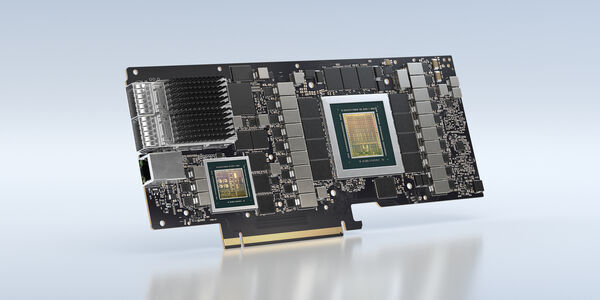
NVIDIA Introduces New Family of BlueField DPUs to Bring Breakthrough Networking, Storage and Security Performance to Every Data Center
"GTC—NVIDIA today announced a new kind of processor — DPUs, or data processing units — supported by DOCA, a novel data-center-infrastructure-on-a-chip architecture that enables breakthrough networking, storage and security performance. NVIDIA founder and CEO Jensen Huang revealed the company’s three-year DPU roadmap in today’s GPU Technology Conference keynote. It features the new NVIDIA® BlueField®-2 family of DPUs and NVIDIA DOCA™ software development kit for building applications on DPU-accelerated data center infrastructure services. “The data center has become the new unit of computing,” said Huang. “DPUs are an essential element of modern and secure accelerated data centers in which CPUs, GPUs and DPUs are able to combine into a single computing unit that’s fully programmable, AI-enabled and can deliver levels of security and compute power not previously possible.” Optimized to offload critical networking, storage and security tasks from CPUs, BlueField-2 DPUs enable organizations to transform their IT infrastructure into state-of-the-art data centers that are accelerated, fully programmable and armed with “zero-trust” security features to prevent data breaches and cyberattacks. A single BlueField-2 DPU can deliver the same data center services that could consume up to 125 CPU cores." [...]
Ciência e Tecnologia

Generating photons for communication in a quantum computing system
"New technique provides a means of interconnection between processors, opening the way to a complete quantum computing platform. MIT researchers using superconducting quantum bits connected to a microwave transmission line have shown how the qubits can generate on demand the photons, or particles of light, necessary for communication between quantum processors. The advance is an important step toward achieving the interconnections that would allow a modular quantum computing system to perform operations at rates exponentially faster than classical computers can achieve. “Modular quantum computing is one technique for reaching quantum computation at scale by sharing the workload over multiple processing nodes,” says Bharath Kannan, MIT graduate fellow and first author of a paper on this topic published today in Science Advances. “These nodes, however, are generally not co-located, so we need to be able to communicate quantum information between distant locations.” In classical computers, wires are used to route information back and forth through a processor during computation. In a quantum computer, the information itself is quantum mechanical and fragile, requiring new strategies to simultaneously process and communicate information." [...]
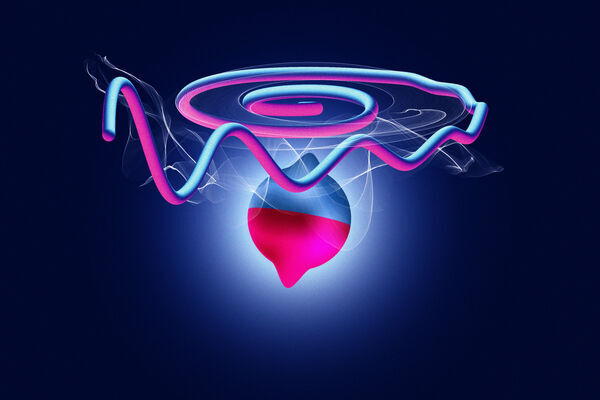
Dynamic, yet inertial – and definitely futuristic
"Researchers conduct experiments to demonstrate inertial motion in magnetic materials In the journal Nature Physics (DOI: 10.1038/s41567-020-01040-y), an international team of scientists from Germany, Italy, Sweden, and France report on their experimental observation of an inertial effect of electron spins in magnetic materials, which had previously been predicted, but difficult to demonstrate. The results are the outcome of one of the first long-term projects at the high-power terahertz light source TELBE at the Helmholtz-Zentrum Dresden-Rossendorf (HZDR). Today, most of the world’s “memory” is stored on magnetic data carriers – hard disks – without which our digital lives would be unthinkable. In the magnetic material, it is the electron spins that do the actual job of storing the data. Imagine this spin as electrons rotating around their own axes, either to the left or right – representing the digital “zeros” and “ones”. There is something special about this rotation, as Dr. Jan-Christoph Deinert from the HZDR Institute of Radiation Physics explains: “In the magnetic field, the electron behaves like a tumbling spinning top." [...]
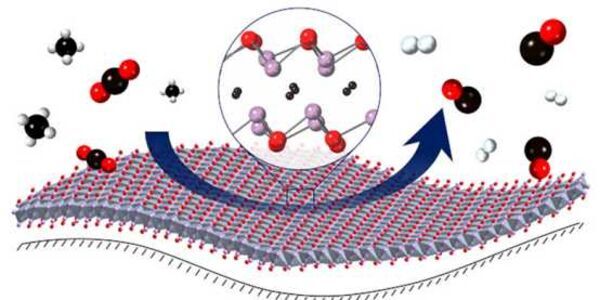
Catalyst for sustainable synthesis gas
"ETH researchers have developed a catalyst that converts CO2 and methane efficiently into synthesis gas – a mixture of hydrogen and carbon monoxide. This could potentially help to produce sustainable fuels and plastics Today, almost all fuels, combustibles and plastics are based on fossil carbon sources, such as oil, natural gas and coal. The search is underway worldwide for ways to replace fossil hydrocarbons with sustainable alternatives. One approach is the synthesis of organic compounds from the climate damaging raw materials methane (CH4) and CO2. In an initial step, the two greenhouse gases must react with each other through the input of energy. This results in a gaseous mixture of energy-rich hydrogen (H2) and carbon monoxide (CO), known as synthesis gas." [...]
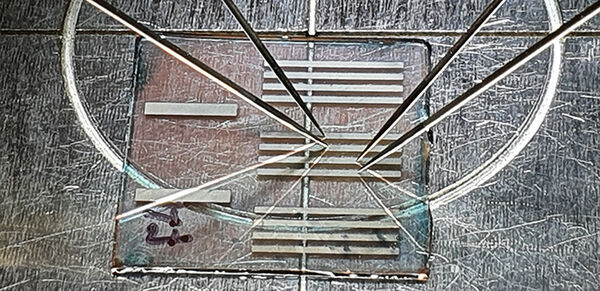
Energy-harvesting plastics pass the acid test
"Air-stable coatings can improve the longevity of wearable devices that tap into body heat. A polymer previously used to protect solar cells may find new applications in consumer electronics, reveals a KAUST team studying thin films capable of converting thermal energy into electricity. When two sides of a semiconductor are at different temperatures, electron migration from hot to cool areas can generate a current. This phenomenon, known as the thermoelectric effect, typically requires semiconductors with rigid ceramic structures to maintain the heat difference between the two sides. But the recent discovery that polymers also exhibit thermoelectric behavior has prompted a rethink of how to exploit this method for improved energy harvesting, including incorporation into wearable devices. Derya Baran and her team at KAUST are helping to engineer self-powered devices using a conducting polymer containing a blend of poly(3,4-ethylenedioxythiophene) and polystyrenesulfonate (PEDOT:PSS) chains." [...]
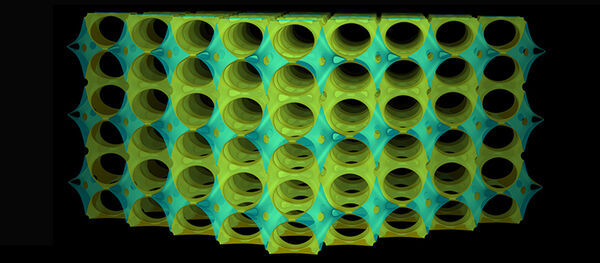
Making disorder for an ideal battery
"Manufacturing safer, more powerful batteries that use geopolitically stable resources requires solid electrolytes and replacing lithium with sodium. A chemical solution is now being offered to battery developers. The lithium batteries that power our electronic devices and electric vehicles have a number of drawbacks. The electrolyte – the medium that enables electrons and positive charges to move between the electrodes – is a flammable liquid. What’s more, the lithium they’re made of is a limited resource that is the focus of major geopolitical issues. Specialists in crystallography at the University of Geneva (UNIGE) have developed a non-flammable, solid electrolyte that operates at room temperature." [...]

Mind and Space Bending Physics on a Convenient Chip
"Thanks to Einstein, we know that our three-dimensional space is warped and curved. And in curved space, normal ideas of geometry and straight lines break down, creating a chance to explore an unfamiliar landscape governed by new rules. But studying how physics plays out in a curved space is challenging: Just like in real estate, location is everything. “We know from general relativity that the universe itself is curved in various places,” says JQI Fellow Alicia Kollár, who is also a professor of physics at the University of Maryland (UMD). “But, any place where there's actually a laboratory is very weakly curved because if you were to go to one of these places where gravity is strong, it would just tear the lab apart.” Spaces that have different geometric rules than those we usually take for granted are called non-Euclidean(link is external). If you could explore non-Euclidean environments, you would find perplexing landscapes." [...]

Chemist uses CO2 to convert seawater into drinking water
"A University of Copenhagen chemist has invented a cutting-edge green technology that uses CO2 to convert seawater into drinking water — within minutes. The plan is to use the desalination technology to replace electricity with CO2 and use it in survival gear and large-scale industrial plants in areas where people lack clean drinking water. More than 800 million people around the world lack access to clean drinking water. And according to the United Nations, the figure will swell to 3.3 billion by 2030. As seawater is already a vital source of drinking water in many parts of the world, the need to find smarter desalination methods increases by the day. One of the fundamental challenges facing modern day water desalination is energy consumption." [...]

Physicists Build Circuit That Generates Clean, Limitless Power From Graphene
"A team of University of Arkansas physicists has successfully developed a circuit capable of capturing graphene's thermal motion and converting it into an electrical current. “An energy-harvesting circuit based on graphene could be incorporated into a chip to provide clean, limitless, low-voltage power for small devices or sensors,” said Paul Thibado, professor of physics and lead researcher in the discovery. The findings, titled "Fluctuation-induced current from freestanding graphene," and published in the journal Physical Review E, are proof of a theory the physicists developed at the U of A three years ago that freestanding graphene — a single layer of carbon atoms — ripples and buckles in a way that holds promise for energy harvesting. The idea of harvesting energy from graphene is controversial because it refutes physicist Richard Feynman’s well-known assertion that the thermal motion of atoms, known as Brownian motion, cannot do work. Thibado’s team found that at room temperature the thermal motion of graphene does in fact induce an alternating current (AC) in a circuit, an achievement thought to be impossible. In the 1950s, physicist Léon Brillouin published a landmark paper refuting the idea that adding a single diode, a one-way electrical gate, to a circuit is the solution to harvesting energy from Brownian motion." [...]

Caltech Researcher Unveils Sensor that Rapidly Detects COVID-19 Infection Status, Severity, and Immunity
"One feature of the COVID-19 virus that makes it so difficult to contain is that it can be easily spread to others by a person who has yet to show any signs of infection. The carrier of the virus might feel perfectly well and go about their daily business—taking the virus with them to work, to the home of a family member, or to public gatherings. A crucial part of the global effort to stem the spread of the pandemic, therefore, is the development of tests that can rapidly identify infections in people who are not yet symptomatic. Now, Caltech researchers have developed a new type of multiplexed test (a test that combines multiple kinds of data) with a low-cost sensor that may enable the at-home diagnosis of a COVID infection through rapid analysis of small volumes of saliva or blood, without the involvement of a medical professional, in less than 10 minutes. The research was conducted in the lab of Wei Gao, assistant professor in the Andrew and Peggy Cherng department of medical engineering. Previously, Gao and his team have developed wireless sensors that can monitor conditions such as gout, as well as stress levels, through the detection of extremely low levels of specific compounds in blood, saliva, or sweat." [...]
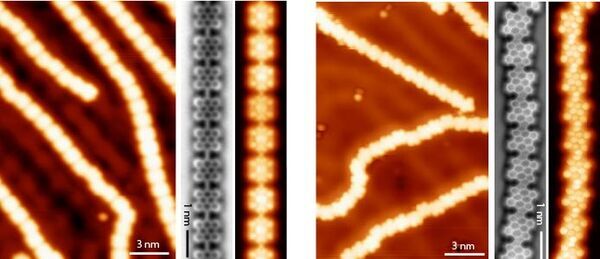
Exploiting molecular vibrations to synthesize low-bandgap polymers
"Researchers study a novel strategy to synthesize low bandgap polymers on a gold surface taking advantage of their molecular vibrations. The work combines the chemical synthesis with STM and AFM studies of the electronic properties of bisanthene polymers, whose synthesis is not feasible by conventional methods. Conjugated polymers are organic macromolecules that are characterized by a backbone chain of alternating double- and single-bonds. Their overlapping p-orbitals create a cloud of delocalised π-electrons, which can result in interesting and useful optical and electronic properties. The design of π-conjugated polymers is highly desirable for their application in a plethora of devices, for example in tailor-made components for nanoelectronics. Conjugated polymers synthesized by wet chemistry present defects that are incompatible with the requirements of atomic-precise electronics." [...]

New shortcut enables faster creation of spin pattern in magnet
"Physicists have discovered a much faster approach to create a pattern of spins in a magnet. This 'shortcut' opens a new chapter in topology research. Interestingly, this discovery also offers an additional method to achieve more efficient magnetic data storage. The research will be published on 5 October in Nature Materials. Physicists previously demonstrated that laser light can create a pattern of magnetic spins. Now, they have discovered a new route that enables this to be done much more quickly, in less than 300 picoseconds (a picosecond is one millionth of a millionth of a second)." [...]

Turning diamond into metal
"Normally an insulator, diamond becomes a metallic conductor when subjected to large strain in a new theoretical model. Long known as the hardest of all natural materials, diamonds are also exceptional thermal conductors and electrical insulators. Now, researchers have discovered a way to tweak tiny needles of diamond in a controlled way to transform their electronic properties, dialing them from insulating, through semiconducting, all the way to highly conductive, or metallic. This can be induced dynamically and reversed at will, with no degradation of the diamond material. The research, though still at an early proof-of-concept stage, may open up a wide array of potential applications, including new kinds of broadband solar cells, highly efficient LEDs and power electronics, and new optical devices or quantum sensors, the researchers say. Their findings, which are based on simulations, calculations, and previous experimental results, are reported this week in the Proceedings of the National Academy of Sciences." [...]

Advancing Multiprincipal Alloys
"Team of materials researchers explores new domains of the compositionally complex metals The most significant advances in human civilization are marked by the progression of the materials that humans use. The Stone Age gave way to the Bronze Age, which in turn gave way to the Iron Age. New materials disrupt the technologies of the time, improving life and the human condition. Modern technologies can likewise be directly traced to innovations in the materials used to make them, as exemplified by the use of silicon in computer chips and state-of-the-art steels that underpin infrastructure. For centuries, however, materials and alloy design have relied on the use of a base, or principal, element, to which small fractions of other elements are added. Take steel, for instance, in which tiny amounts of carbon added to the principal element iron (Fe), lead to improved properties." [...]

All together now: Experiments with twisted 2D materials catch electrons behaving collectively
"Scientists can have ambitious goals: curing disease, exploring distant worlds, clean-energy revolutions. In physics and materials research, some of these ambitious goals are to make ordinary-sounding objects with extraordinary properties: wires that can transport power without any energy loss, or quantum computers that can perform complex calculations that today’s computers cannot achieve. And the emerging workbenches for the experiments that gradually move us toward these goals are 2D materials — sheets of material that are a single layer of atoms thick. In a paper published Sept. 14 in the journal Nature Physics, a team led by the University of Washington reports that carefully constructed stacks of graphene — a 2D form of carbon — can exhibit highly correlated electron properties. The team also found evidence that this type of collective behavior likely relates to the emergence of exotic magnetic states. “We’ve created an experimental setup that allows us to manipulate electrons in the graphene layers in a number of exciting new ways,” said co-senior author Matthew Yankowitz, a UW assistant professor of physics and of materials science and engineering, as well as a faculty researcher at the UW Clean Energy Institute." [...]

Could megatesla magnetic fields be realized on Earth?
"Magnetic fields are used in various areas of modern physics and engineering, with practical applications ranging from doorbells to maglev trains. Since Nikola Tesla’s discoveries in the 19th century, researchers have strived to realize strong magnetic fields in laboratories for fundamental studies and diverse applications, but the magnetic strength of familiar examples are relatively weak. Geomagnetism is 0.3−0.5 gauss (G) and magnetic tomography (MRI) used in hospitals is about 1 tesla (T = 104 G). By contrast, future magnetic fusion and maglev trains will require magnetic fields on the kilotesla (kT = 107 G) order. To date, the highest magnetic fields experimentally observed are on the kT order. Recently, scientists at Osaka University discovered a novel mechanism called a “microtube implosion,” and demonstrated the generation of megatesla (MT = 1010G) order magnetic fields via particle simulations using a supercomputer." [...]
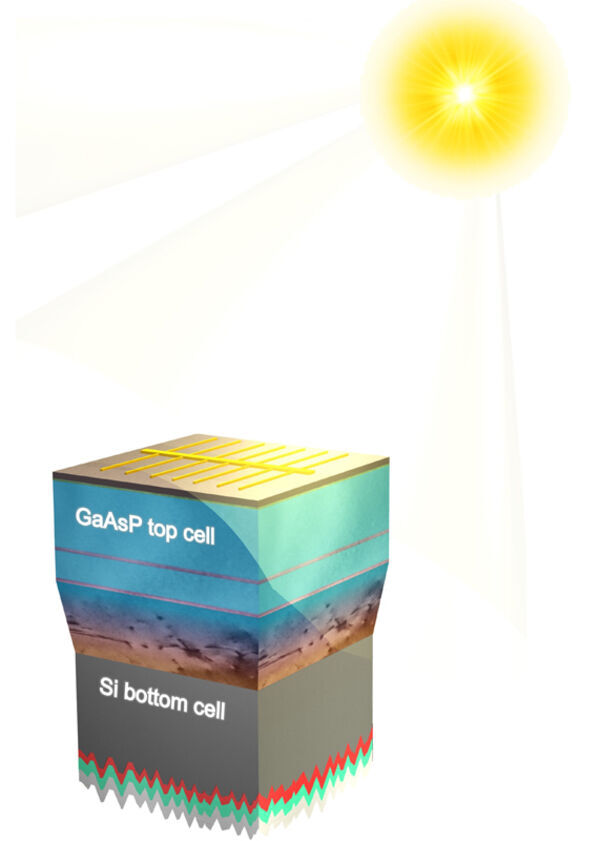
Multi-institutional team extracts more energy from sunlight with advanced solar panels
"Researchers working to maximize solar panel efficiency said layering advanced materials atop traditional silicon is a promising path to eke more energy out of sunlight. A new study shows that by using a precisely controlled fabrication process, researchers can produce multilayered solar panels with the potential to be 1.5 times more efficient than traditional silicon panels. The results of the study led by University of Illinois Urbana-Champaign engineer Minjoo Larry Lee are published in the journal Cell Reports Physical Sciences. “Silicon solar panels are prevalent because they are affordable and can convert a little over 20% of the sun’s light into usable electricity,” said Lee, a professor of electrical and computer engineering and Holonyak Micro and Nanotechnology Lab affiliate. “However, just like silicon computer chips, silicon solar cells are reaching the limit of their abilities, so finding a way to increase efficiency is attractive to energy providers and consumers.” Lee’s team has been working to layer the semiconductor material gallium arsenide phosphide onto silicon because the two materials complement each other. Both materials absorb visible light strongly, but gallium arsenide phosphide does so while generating less waste heat." [...]
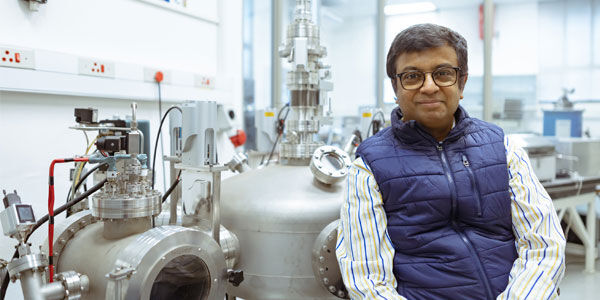
Diamonds are a quantum scientist’s best friend
"The discovery of triplet spin superconductivity in diamonds has the potential to revolutionise the high-tech industry. Diamonds have a firm foothold in our lexicon. Their many properties often serve as superlatives for quality, clarity and hardiness. Aside from the popularity of this rare material in ornamental and decorative use, these precious stones are also highly valued in industry where they are used to cut and polish other hard materials and build radiation detectors. More than a decade ago, a new property was uncovered in diamonds when high concentrations of boron are introduced to it – superconductivity. Superconductivity occurs when two electrons with opposite spin form a pair (called a Cooper pair), resulting in the electrical resistance of the material being zero." [...]

Researchers find "missing link" between magnetars and rotation-powered pulsars
"Researchers from the RIKEN Cluster for Pioneering Research have made observations of a new magnetar, called Swift J1818.0-1607, which challenges current knowledge about two types of extreme stars, known as magnetars and pulsars. The research, just published in The Astrophysical Journal, was done using the Neutron star Interior Composition Explorer (NICER), an X-ray instrument aboard the International Space Station. Magnetars are a subtype of pulsars, which are neutron stars—degenerate stars that failed to become black holes but instead became extremely dense bodies composed mostly of neutrons. Magnetars as well as some young rotation-powered pulsars—another type of pulsar—emit powerful X-ray beams, but the mechanism is believed to be different. With magnetars, the beams are believed to be powered by extremely strong magnetic fields, whereas in canonical pulsars they are powered by the rapid rotation of the star. However, there is much that is not well understood about these phenomena." [...]

Printing organic transistors
"Researchers successfully print and demonstrate organic transistors, electronic switches, which can operate close to their theoretical speed limits. They showed high-speed operation only requires low voltages to work, which would reduce the power consumption of their applications. These kinds of transistors are used in display technology such as liquid crystal display (LCD) screens and e-ink. This is the first time this kind of transistor has been printed and it could lead to new curved, flexible and even wearable low power devices. The chances are you are reading these words on a smartphone or computer screen. For around the last 10 years, these types of screens have been based on a display technology composed of so-called thin film transistors." [...]
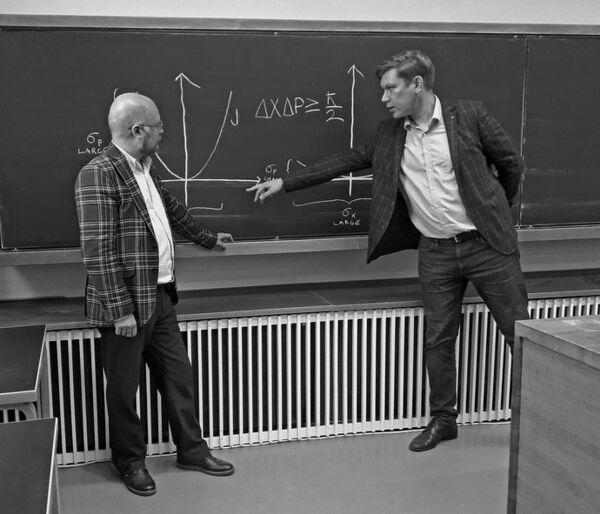
A new interpretation of quantum mechanics suggests that reality does not depend on the person measuring it
"For 100 years scientists have disagreed on how to interpret quantum mechanics. A recent study by Jussi Lindgren and Jukka Liukkonen supports an interpretation that is close to classical scientific principles. Quantum mechanics arose in the 1920s – and since then scientists have disagreed on how best to interpret it. Many interpretations, including the Copenhagen interpretation presented by Niels Bohr and Werner Heisenberg and in particular von Neumann-Wigner interpretation, state that the consciousness of the person conducting the test affects its result. On the other hand, Karl Popper and Albert Einstein thought that an objective reality exists. Erwin Schrödinger put forward the famous thought experiment involving the fate of an unfortunate cat that aimed to describe the imperfections of quantum mechanics." [...]
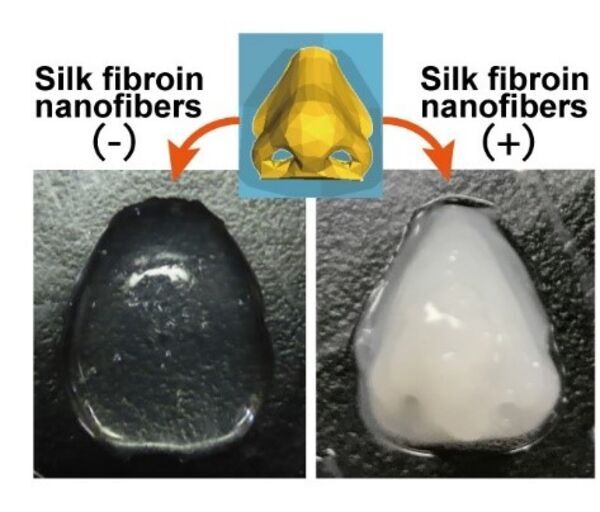
Silk fibers improve bioink for 3D-printed artificial tissues and organs
"How do you test, in early-stage research, whether a potential pharmaceutical effectively targets a human tumor, organ, or some other part of the body? How do you grow a new hand or some other body part? Researchers are in the early stages of using 3D cell printing technology to make developments like these happen. A standard way—currently unavailable—to fix the cells in place after printing would help researchers avoid having to ‘reinvent the wheel’ in every new investigation. In a study recently published in Materials Today Bio, researchers from Osaka University have used silk nanofibers obtained by mechanical disintegration to enhance the printing process without damaging the cells or cell assemblies. An attractive point of silk for this application is that silk is believed to be a safe material for humans." [...]

CMU Scientists Solve 90-Year-Old Geometry Problem
"Carnegie Mellon University computer scientists and mathematicians have resolved the last, stubborn piece of Keller's conjecture, a geometry problem that scientists have puzzled over for 90 years. By structuring the puzzle as what computer scientists call a satisfiability problem, the researchers put the problem to rest with four months of frenzied computer programming and just 30 minutes of computation using a cluster of computers. "I was really happy when we solved it, but then I was a little sad that the problem was gone," said John Mackey, a teaching professor in the Computer Science Department (CSD) and Department of Mathematical Sciences who had pursued Keller's conjecture since he was a graduate student 30 years ago. "But then I felt happy again. There's just this feeling of satisfaction." The solution was yet another success for an approach pioneered by Marijn Heule, an associate professor of computer science who joined CSD last August." [...]

Lego-like assembly of zeolitic membranes improves carbon capture
"EPFL chemical engineers have developed a new way to manufacture zeolitic membranes, state-of-the-art materials used for gas separation in harsh conditions. Zeolites are porous minerals that occur both naturally but also are being synthesized artificially. Because they are stable and durable, zeolites are used for chemical catalysis, purification of gases and liquids, and even in medical applications such as drug delivery and blood-clotting powders, e.g. the QuickClot trauma bandages used in the US military. Zeolites used in gas separation are usually produced as membranes. The state-of-the-art zeolitic membranes are manufactured by a lengthy and complex crystallization process." [...]
Projetos Maker
Diversos Projetos interessantes.
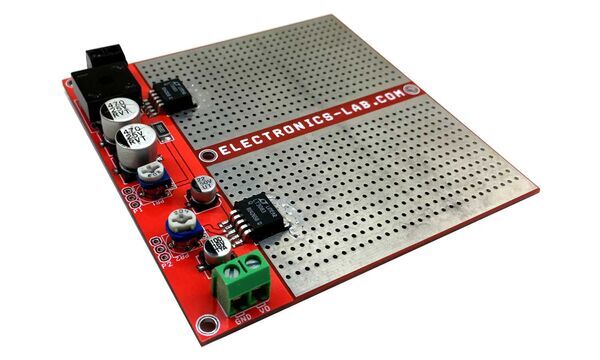
0 to 10 V Adjustable Lab Power Supply with Current Control
"The circuit presented here is a very simple and easy to build Lab Power Supply. The output of this power supply is adjustable from 0 to 10V DC, and it has current limit control up to 3A. Two Trimmer potentiometers are provided to adjust the voltage and current. The input supply is DC 12V to 18V 3A or AC12V /3A. The screw terminals help to connect the input and output connections, and a large area on PCB provided as heat spread so no external heatsinks required. The power supply also includes over-temperature protection." [...]
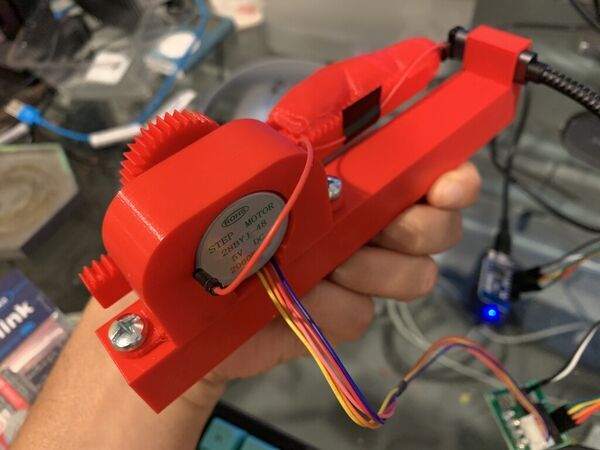
Pressing YubiKeys
"If you don’t work in tech but primarily work on your laptop, you probably should have a YubiKey. And if you work on a political campaign or as a journalist, you should definitely have one (or something similar). Talk to your IT Security department about that. This post will mostly be about something your IT Security department doesn’t want to hear about, though, so maybe don’t mention it to them. YubiKeys act as two-factor authentication. This means that after you log-in to a system with your username and password, the system requires you to authorize in a second way as well." [...]

Data Transfer Using LED Light (Li-Fi)
"DIY light based transmission between two Arduinos using LED and LDR with custom communication protocol. I wanted to transfer data between two arduinos wirelessly using an unconventional method. I decided to use a LED as a transmitter and receive the data by an LDR. I wrote a simple protocol to allow for reliable data transmission. With minor modifications this project can also be adapted to transfer data using fiber optics. I encourage you to try this and share your implementation!" [...]
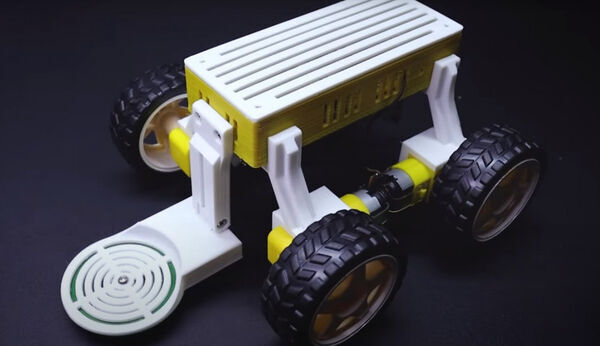
Check Out This DIY Arduino-Powered Metal Detector Robot
"Everyone loves metal detecting. But when you combine it with remote-controlled robots, the experience is taken to a whole new level. Read on to find out how to build one for yourself! Like most projects of this nature, you'll need a few basic tools (listed below) and some other components. We have included links to some of the products in case you need to buy them: Main components: 2 no. Arduino RF Nano 2 no." [...]

ArClock - a Smart Display Wrapped in Real Wood
"ArClock is my updating of the "LED clock inside a block of wood" idea. It's a pretty simple build and the result is eye-catching but tasteful (depending on how it's configured!). It's built around a WiFi-enabled microcontroller driving a matrix of addressable RGB LEDs, inside a 3D printed case covered in wood veneer. It uses a NTP to display accurate time, and can also display local weather and ping times. The configuration is all via a built-in web interface. Check out the video for a quick intro on how to build and configure it: Supplies: The parts required are: An 8x32 WS2812B LED Matrix." [...]

Py-SIM800L-USSD
"Unstructured Supplementary Service Data (USSD) network result parser with Python language SIM800L is a complete Quad-band GSM/GPRS solution in a SMT type which can be embedded in the customer applications. SIM800L support Quad-band 850/900/1800/1900MHz, it can transmit Voice, SMS and data information with low power consumption. With tiny size of 15.8*17.8*2.4 mm, it can fit into slim and compact demands of customer design. Featuring Bluetooth and Embedded AT, it allows total cost savings and fast time-to-market for customer applications. The Raspberry Pi is a low cost, credit-card sized computer that plugs into a computer monitor or TV, and uses a standard keyboard and mouse. It is a capable little device that enables people of all ages to explore computing, and to learn how to program in languages like Scratch and Python." [...]
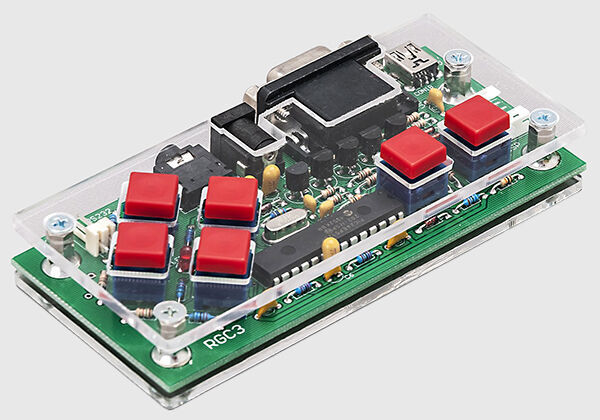
DIY Single-chip 2D Retro Game Console
"This DIY project offers the simple stand-alone VGA game console which is based on PIC24EP512GP202 microcontroller. As the video signal and the corresponding sync signals are generated by software, the console contains a minimum of hardware. There is also an audio signal output with five binary tone channels, mixed by a passive resistor network. Two of those channels are used for sound effects, similar to ones used in video games of that time (early eighties) and three for background music. This output is capable of driving line output for PC speakers or headphones. It should be noted that there is no video processing unit, PGA or any special purpose chips, and that PIC microcontrollers are not designed for video signal generation." [...]
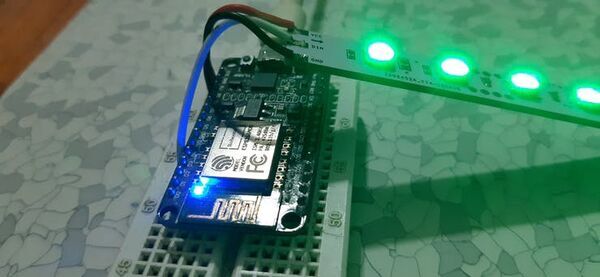
WS2812B RGB LED in Circuits
"Learn how to use WS2812B RGB LED in custom circuits so you have used Neopixel Rings/Strips/Matrix in one of your projects and now you want to make a circuit and add WS2812B LED on it but don't know-how? INTRO (THEORY) WS2812B is an intelligent control LED light source that the control circuit and RGB chip are integrated into a package of 5050 components. It internal include intelligent digital port data latch and signal reshaping amplification drive circuit. The data transfer protocol uses a single NZR communication mode. After the pixel power-on reset, the DIN port receive data from controller, the first pixel collects initial 24bit data then sent to the internal data latch, the other data which reshaping by the internal signal reshaping amplification circuit sent to the next cascade pixel through the DO port. After transmission for each pixel, the signal to reduce 24bit." [...]

Mason Jar Dice Roller
"Here is a great weekend project to undertake, if you plan on playing any board/dice related games. To build the project you will need a continuous rotation servo, an arcade button and a arduino nano or ESP8266 board, in addition you will need a 3D printer. You have a couple of options, you can either use the arcade button to drive the continuous servo to roll the dice, or you can use a web app hosted on the ESP8266 NodeMCU.The web app has 4 buttons, which spin the servos at various speeds.. Follow the steps below to make your own Dice roller..." [...]

Power Meter with ESP8266
"Well I saw the smart air cooler project by Moiz where he switched the cooler on/off from his web app and I thought of extending it a little. While controlling an appliance from phone is cool, it doesn't save you any money, right! So I thought what if we could see how our appliance is consuming power and tune our usage around that and eventually reduce our electricity bills by a few percent. So in this tutorial, I'll show you how I built my IoT power meter that monitors current and power of appliances similar to the cooler. The power meter shows the current and power consumption graphs in the web app on my phone. Let's Talk Business!" [...]
Arduino Star Tracker
"Track stars using Arduino, GPS, a laser pointer, and some motors! Story This project follows the system design for making a laser-pointer point to a star with a given date, time, GPS location, and the star's celestial coordinates. Background The system is calibrated at startup by pointing the laser at the North Star and getting an initial heading and pitch reading from a 9-axis sensor. This initial reading is then used to calculate an offset for both heading and pitch such that the motors will be able to adjust the position of the laser to the specific target horizontal coordinate of a star. One obstacle in developing this system is the fact that a star's horizontal coordinate is constantly changing as time progresses. Luckily, the equatorial coordinate system uses fixed coordinates for stars which can be converted to the horizontal coordinates we want to use." [...]
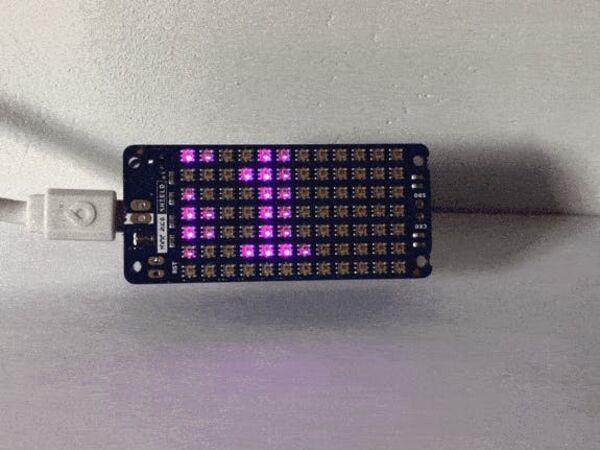
Arduino Air Quality Monitor
"Arduino MKR RGB displays PurpleAir air quality data for a sensor near you. The open, local, real-time air quality data from PurpleAir has been super valuable during the pollution we've experienced over the past few months. I was also happy to see they even used the Arduino IDE to create this product! I've found myself checking PurpleAir's map multiple times a day - then realized the Arduino could just read the value itself and display the color on an LED display - so you would always know when it's good to go outside. This project uses the Arduino MKR WiFi 1010 and RGB shield which is a really neat, simple combination of hardware - just add USB power supply. As the components inside a connected LED lamp it would look really good behind some translucent white plastic casing - I haven't got around to doing this but I am sure you can get creative." [...]
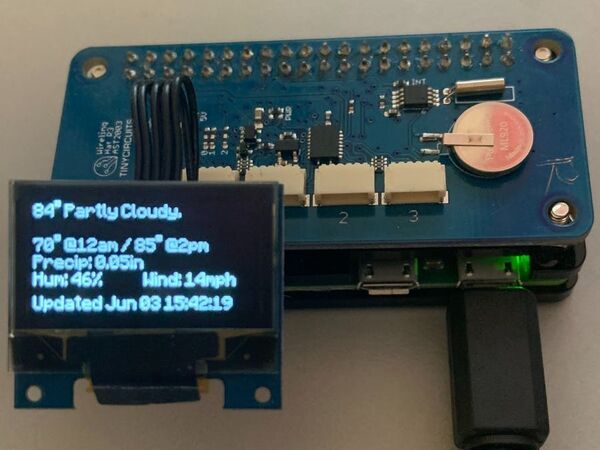
Pi Real Time Weather Forecast
"Display Real-Time Weather of your area using ThingSpeak! In this tutorial, you'll learn how to acquire data from a webpage and how to present that data on an OLED Wireling on your Raspberry Pi. This tutorial makes a simple daily weather summary display, but this concept can be applied to any kind of data from any webpage for whatever your particular application is. To get started, make sure you have gone through the Pi Hat Setup Tutorialand OLED Wireling Python Tutorial to have all necessary packages for this project installed on your pi. And just make sure you have the following: Python 3 (Python 2 is not supported!) liveweather Python Example An internet connection Hardware Assembly If you haven't already, attach the Wireling Adapter Raspberry Pi Hat to your Raspberry Pi." [...]
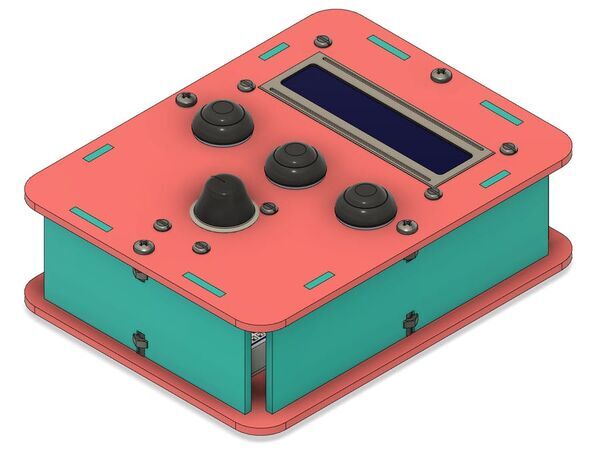
Make and Download your Gas Leak Detector Case with Arduino
"You'll learn how to make a gas leak detector with Arduino and earn the project files. One of the main causes of fires in homes is the leakage of cooking gas that when it comes in contact with sparks caused by the lighting of lamps through the switches. Faced with this problem, we will develop a system for the detection of cooking gas present in the environment. To perform the detection of this gas we will use the MQ2 sensor, this sensor has a resistance that varies according to the gas detection, it is possible to adjust its sensitivity through a trimpot present on the plate. This detection system will consist of an Arduino Nano, MQ - 2 sensor, red led, buzzer, and I2C 16 x 2 LCD display. Therefore, through this article you will learn: Perform the assembly of the circuit on the protoboard; Understand the operation of the MQ2 sensor; Perform the communication of the Arduino JLCPCB with the MQ2 sensor; Display of measured values on the LCD Display." [...]
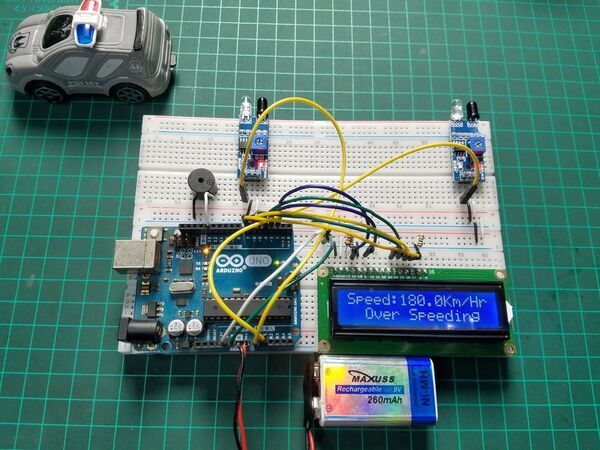
Car Speed Detector
"How to make a Car Speed Detector using Arduino and IR Sensor" [...]

Baremetal programming on the TinyAVR 0 micro-controllers
"Are you an 8-bit or a 32-bit programmer? At OMZLO, we have been mainly focussing our development efforts on newer 32-bit Arm-Cortex chips (STM32 and SAMD), which typically offer more RAM, more speed, more peripherals, at a similar or lower price-point than older 8-bit MCUs. But 8-bit MCUs are far from dead. Microchip has notably released a new series of chips, collectively branded as the "tinyAVR 0-series", which offer more modern peripherals than the older AVR chips at a very competitive price point. They seem like the perfect candidate for simple products that don't need all the features and fine-tuning capabilities of the newer 32-bit MCUs. 8-bit MCUs are also substantially simpler to program, which translates into faster development time." [...]
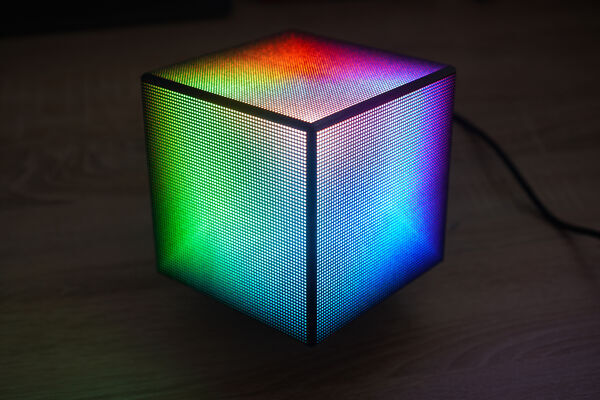
There oughta be an LED cube
"Inspired by many LED cube projects before me, I decided to build my own version, which eventually turned into a CPU status indicator on my desk. Is there a more over the top way to monitor your CPU temperature and usage than 12,288 individually addressable RGB LEDs arranged as a cube? In this case, I strongly suggest to check out the video first as it conveys the looks of the cube much better than static images. Of course, the blog article will provide all the technical details. " [...]
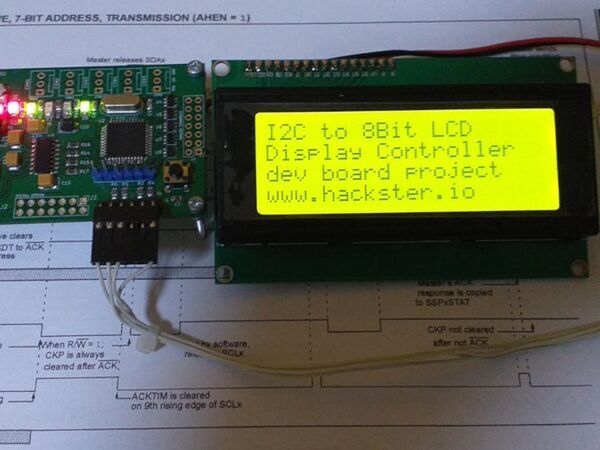
I2C to 8Bit LCD Display Controller
"This project is an I2C to 8-bit Bus converter plus three(3) control bits, primarily designed to handle 2004 and 1602 LCD display modules. While developing a project, I run into a need for an LCD to display several information. The most common models are the 1602 (16 characters by 2 row) and 2004 (20 characters by 4 rows), which are low cost and easy to source. However, using these models requires 16 wire interface. Running these number of wires from the LCD to the main board is not a good option. Designing the main PCB, and allocating such number of channels are surely a trouble." [...]

Digital Clock But Without a Microcontroller
"A digital clock completely built from scratch without any coding or microcontroller. Just by using only 74xx and 40xx series digital IC. It's pretty easy to build circuits with a microcontroller but we totally forget the tons of work that a microcontroller had to go through to complete a simple task(even for blinking an led). So, how hard would it be to make a digital clock completely from scratch? No coding and no microcontroller and to make it real HARDCORE how about build the circuit in a perf-board without using any printed circuit boards. This is really a challenging project to do, not because of how the clock logic works but because of how we are going build the circuit with all these components together in a compact perf-board." [...]
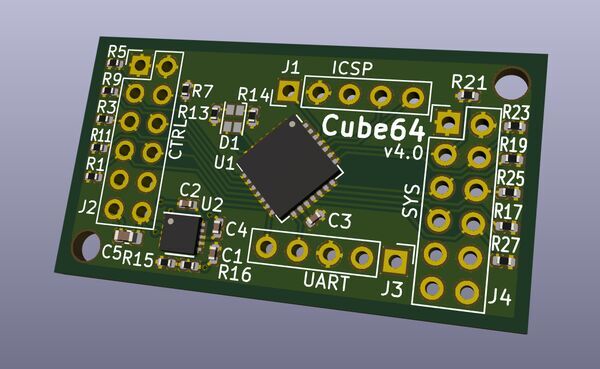
Cube64
"This is a project to build an adaptor for using GameCube controllers with N64 consoles. The motivation behind this is that the N64 has some really great games, but the controller hardware is rather bad- the joysticks wear out quickly, and the layout is odd. The GameCube controllers, however, have a superset of the features and a much better joystick. A secondary goal of this project is to more thoroughly reverse engineer the protocols involved and create reusable libraries for interfacing PIC microcontrollers to N64 and GameCube devices. The very basics of reverse engineering the two protocols were done before Micah (@scanlime) started this project, but she quickly discovered that there's much more to the protocol. We believe this project may be the first one to completely reverse engineer the protocol used by standard N64 controllers, including peripherals like the Controller and Rumble Paks." [...]

Arduino RTC Bird Feeder v2.0 for Poultry Conditioning
"Feed the poultry in quotidian routine to condition them - sensory preconditioning - to improve egg production and hatching process. I was keeping quails, chickens, and ducks in my garden before I moved, but it was struggling to manage to feed them in quotidian routine - day-to-day - to accustom them to a new egg production schedule. Also, I was trying to apply sensory preconditioning - repeated simultaneous presentations of two neutral stimuli (sound and light) - while feeding them to improve egg production rate, and it is mandatory to warn the poultry with light and sound while practicing sensory preconditioning. Hence, I had developed a bird feeder with the Arduino Nano as a budget-friendly solution to the problems I had encountered. In this project, I will discuss an enhanced version of my previous bird feeder for those who need a cheap device to practice sensory preconditioning with the poultry. To obtain current time, date, and temperature, I used a DS3231 RTC module." [...]
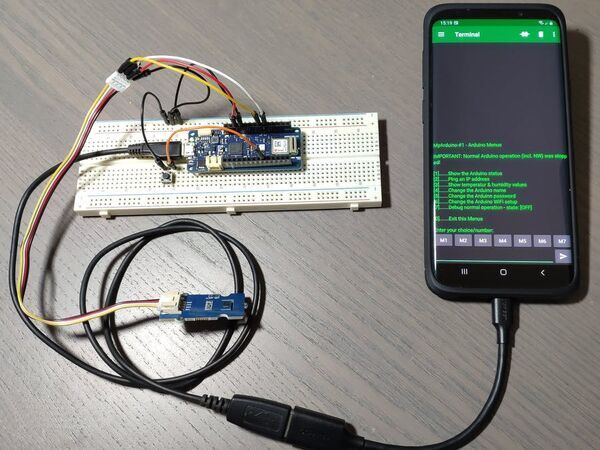
Serial Service Menu
"Show status information, change NW credentials, ping your gateway, show sensor values or get more details by activating debugging… Motivation When I handover Arduino IoT projects to friends I realize that I need to address the following requirements: Various network credentials must be changeable by others without an IDE. Here some examples: SSID/Key for WiFi, APN/Pin/UN/PW for GSM, APP_EUI/KEY for LoRa-WAN, etc.) A Hostname byside the THING_ID would be useful. The Serial-Line is slow by design and therefore I avoid printing out unnecessary information's. But in kind of troubles it must be possible to activate serial debugging. And of course, without restarting the Arduino - to avoid that the reboot temporary fix a problem... Get some general status information's out of the Arduino." [...]

A4 Size CNC 2D Plotter
"A4 size CNC 2D Plotter using Processing, Arduino, L298 and Stepper Motor | A4 CNC Plotter" [...]
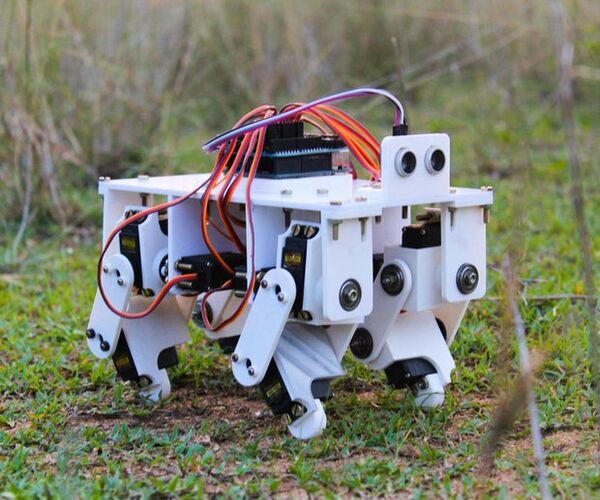
3D Printed Arduino Powered Quadruped Robot
"From the previous Instructables, you can probably see that I have a deep interest for robotic projects. After the previous Instructable where I built a robotic biped, I decided to try and make a quadruped robot that could imitate animals such as dogs and cats. In this Instructable, I will show you the design and assembly of the robotic quadruped. The primary goal while building this project was to make the system as robust as possible such that while experimenting with various walking and running gaits I wouldn't have to constantly worry about the hardware failing. This allowed me to push the hardware to its limit and experiment with complex gaits and motions. A secondary goal was to make the quadruped relatively low-cost using readily available hobby parts and 3D printing which allowed for rapid prototyping." [...]

Mechanical-Digital Steel Ball Clock
"So I decided to finally learn how to use an Arduino and worked my way up to my very first project, a digital clock that is completely mechanical. Enjoy! Supplies: Electronics (1) Arduino Nano (2) PCA9685, 16-Channel 12-bit PWM/Servo Driver (1) DS3231, Real-Time Clock (RTC) (1) TTP223B Capacitive Touch Switch Modul (33) SG90 Servo (2) 20KG Digital Servo High (1) Servo Signal Reverser (1) 12V 6A Power Supply Materials Walnut Plywood, 0.125" Walnut Veneer Clear Acrylic, 0.120" Carbon Steel Wire Small Screws Small Permanent Magnets 0.25" Steel Balls Equipment Glowforge Laser Cutter General Hand Tools" [...]

Moving LED Eyes Using a Range of Inputs Including Gesture Control
"During the COVID-19 pandemic Melbourne has been under some of the strictest lockdowns in the world, which has essentially meant that I've had lots of spare time to learn something new. So I've decided to turn my hand to some hobby electronics to see what sorts of things I can create. I had spent some time looking at different sensors from the electronics shop I had ordered some things from and came across a gesture sensor! I thought it would be pretty cool to see what I could use it for and so I ordered one. I'm also learning lots about LEDs and the LED Matrix, so I thought it would be good to combine the two and create a set of moving eyes that could be used on a prop, as a puppet, or just something to make on a rainy afternoon. Once you understand the commands and how it all ties in, the options really are endless and only limited by your imagination." [...]

Building a Self-Driving Boat (ArduPilot Rover)
"You know what's cool? Unmanned self-driving vehicles. They are so cool in fact that we (my uni colleagues and me) started to build one ourselves back in 2018. That is also why I set out this year to finally finish it in my free time. In this Instructable I want to share this project with you and get you into building your own self-driving vehicle. I also made a little YouTube Video that scratches the surface of the project and gives you a quick rundown of all the mishaps along the way." [...]

Itsy Bitsy: an Untethered Climbing Robot
"My goal for this project was to design & build a small untethered climbing robot and to record it in my very first Instructable (woohoo!). The result is the robot shared here, which uses a rack and pinion system to pin itself between parallel surfaces and a simple lever mechanism and prismatic joint to inch its way forward. I hope you enjoy, and I'm looking forward to your feedback on what I can improve in the design and documentation. Supplies: Tools: 3D printer (or access to one) - for reference, I printed the components in PLA on an Ender 3 Pro Soldering iron Wire strippers Hot melt glue gun Screwdrivers Multimeter Computer with Arduino IDE installed USB cable and 5V FTDI board, for programming the Arduino [Link] LiPo Battery Charger [Link] Materials: Qty 1 - 5V Arduino Pro Mini, or equivalent [Link] Qty 1 - LM2596 buck coverter (link is to a 6 pack) [Link] Qty 2 - 3.7V, 1Ah LiPo Batteries [Link] Qty 2 - JST right angle connectors [Link] Qty 3 - Tower Pro SG90 micro servo and accompanying hardware (link is to a 5 pack) [Link] Qty 1 - Panel mount SPDT toggle switch [Link] 0.1" pitch breakaway headers [Link] Robot Parts - Printed in PLA or preferred printing material (download the files from Thingiverse: https://www.thingiverse.com/thing:4607768) Qty 1 - Head Cover Qty 1 - Top Frame Qty 1 - Bottom Frame Qty 2 - Spur Gear Qty 4 - Rack Gear Clamp Qty 4 - Guide Plate Qty 1 - Separated Clevis Qty 1 - Motor Lever Arm Qty 1 - Motor Drive Arm Qty 2 - M3 Washers (or similar size) Miscellaneous wire, for making electrical connections" [...]
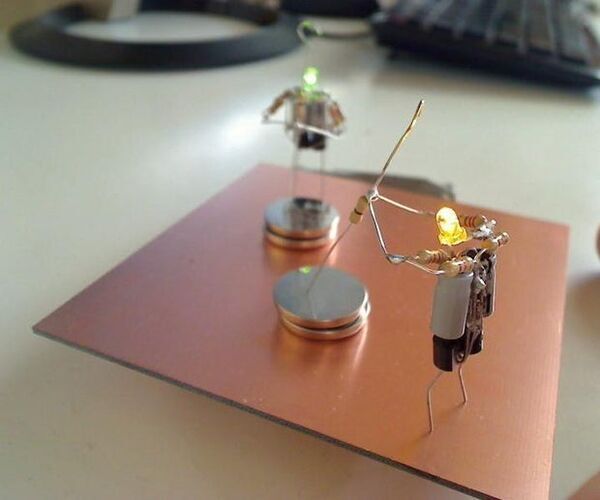
Tiny LED Blinking Figure
"You can easily blink the LED with arduino or 555 timer. But You can make a blinking circuit without such ICs. This is an simple blinking figure made from discrete parts. Supplies: NPN transistor 2sc1815 x 2 or any little NPN transistor Capacitor 47μF x 2 Resistor 4.7KΩ x 2 , 1KΩ x 1 , 100 Ω x 1 , 0 Ω x 1 Battery CR2032 x 1 LED Red , Green or Yellow x 1 Copper plate Solder wire" [...]

Automatic SMD Reflow Oven From a Cheap Toaster Oven
"Hobbyist PCB making has become much more accessible. Circuit boards that contain only through-hole components are easy to solder but the size of the board is ultimately limited by the component's size. As such, utilizing surface mount components enable a more compact PCB design but is much more difficult to solder by hand. Reflow ovens provide a method that makes SMD soldering significantly easier. They work by cycling through a temperature profile that provides a consistent escalation in temperature which melts the solder paste underneath the surface mount components. Professional reflow ovens can be expensive especially if they are used on an occasional basis." [...]
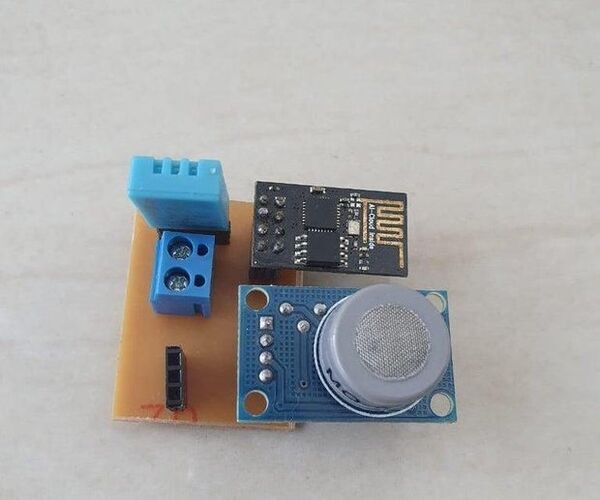
Gas Leak and High Temperatures Detector
"The project was made with the intention of being used at home, being a simple gas leak and high temperatures detector that uses ESP-01 and sends an alert by the IFTTT to your phone. For the project the following items will be used: 1 ESP-011 Gas Sensor mq-91 Temperature Sensor dht-111 Voltage Calculator ams1117 (5v to 3,3v) All of these materials can be found easily on the internet. If the idea is to do this project as soon as possible, it is recommended to buy the items on the "Mercado Livre" website (if you're in Brazil), since it is safe, fast (about 1 week or 2 the items arrive at the destination) and cheaper than in conventional stores. However, if the project is not in a hurry, it is much cheaper to buy items abroad such as Ebay, Aliexpress, etc. But there is no guarantee of when and if the product will arrive at its destination. " [...]

Simple Dry Electrode EMG for Arduino
"Electromyography is a technique used for recording the electrical activity of a muscle. In order for a muscle to move, it must receive an electrical signal from the brain via a motor neuron, with the frequency of nerve impulses controlling the force of contraction. This generates a potential difference on the surface of the skin (in the magnitude of 30micro - 50millivolts)* which the EMG circuit can pick up and amplify to around 1-2V, allowing it to be easily read on an analog pin of a microcontroller such as Arduino. The simplest EMG circuit has 3 electrodes and can measure the electrical activity of one muscle. 2 electrodes are placed next to each other in the middle of the muscle, approx. 3-8cm apart, and the 3rd one is grounded and placed on a bone or held in hand and acts as a reference electrode." [...]
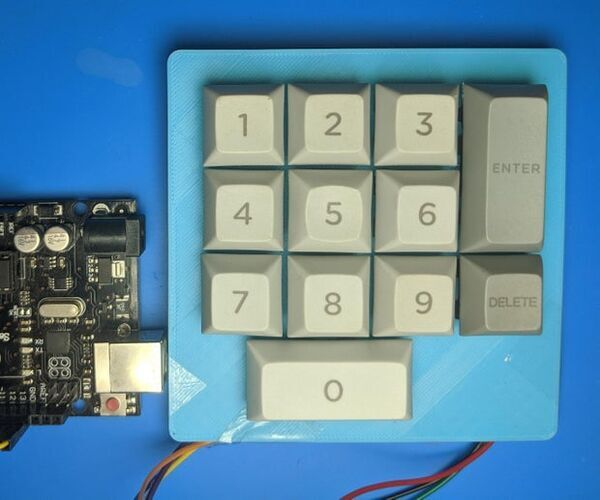
Arduino Mechanical Keypad
"I needed a pin pad for another project, so I decided to make a keypad with parts I had at home. Supplies: 1u Keycaps: 1 to 9 DELETE 2u Keycaps: 0 ENTER 12 key switches (I used Cherry yellows but any will Cherrys will work!) Arduino Uno 3D printed switch plate" [...]
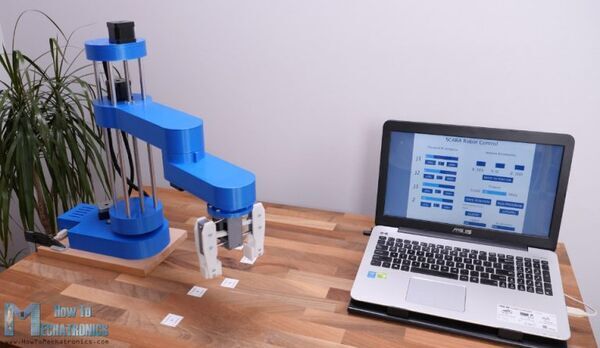
SCARA Robot | How To Build Your Own Arduino Based Robot
"In this tutorial we will learn how to build an Arduino based SCARA Robot. I will show you the entire process of building it, starting from designing robot to developing our own Graphics User Interface for controlling it. Overview The robot has 4 degrees of freedom and it’s driven by 4 NEMA 17 stepper motors. Additionally, it has a small servo motor for controlling the end effector or the robot gripper in this case. The brain of this SCARA robot is an Arduino UNO board which is paired with a CNC shield and four A4988 stepper drivers for controlling the motors. Using the Processing development environment, I made a Graphic User Interface which features both Forward and Inverse Kinematics control." [...]
That's all Folks!



